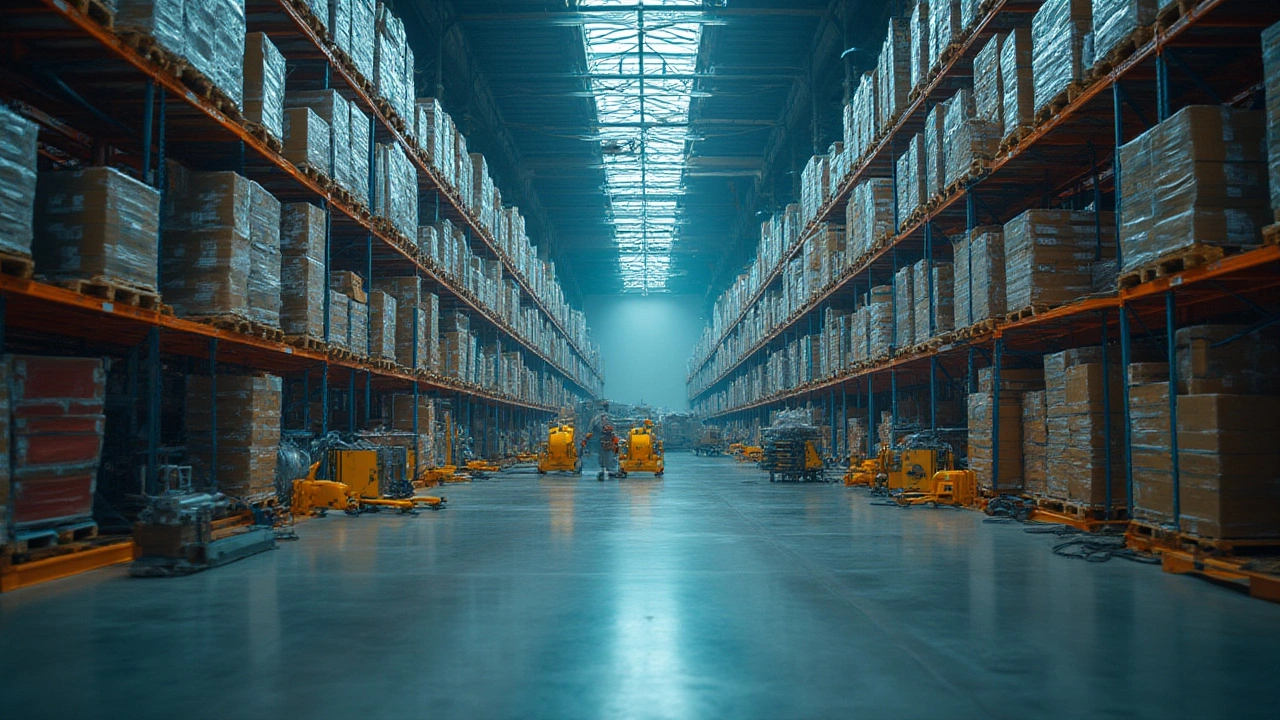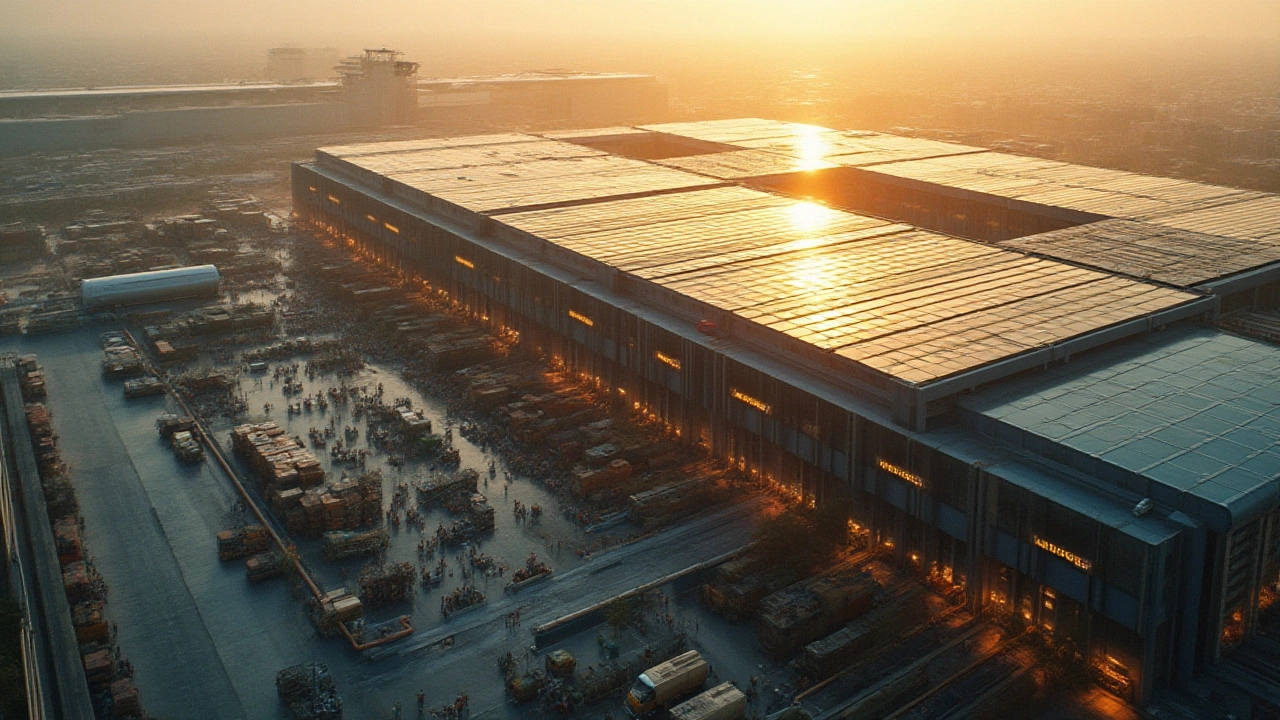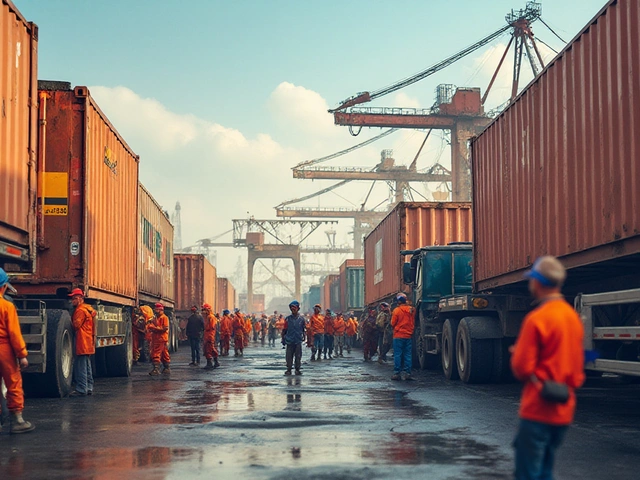It’s wild to think that a single building can store everything from headphones to hot tubs, and still have room for surprises. That’s exactly what the largest Amazon warehouse does—with a size that’s not just big; it’s jaw-dropping. People love to guess the scale of Amazon’s operations, picturing endless conveyor belts and shelves that stretch so far, your Fitbit gives up counting steps. But not many know where it all comes together under one roof, or just how crucial this mega-warehouse is to modern shopping habits. Want to know where the king of Amazon’s warehouses stands, how it came to be, and what happens inside? Let’s dig in—this is more than just square footage.
The Location of the Largest Amazon Warehouse
For ages, Amazon’s network of fulfillment centers has been growing, popping up in the U.S., Europe, and beyond. But as of mid-2025, the largest Amazon warehouse in the world is located in Mt. Juliet, Tennessee, USA. Opened back in late 2021, this gigantic fulfillment center is Amazon’s crowning jewel. How big are we talking? This place covers an incredible 3.6 million square feet. To paint the picture: that’s more than 63 football fields stitched together side by side. Stick a small town in there, and you might still have room left for a roller rink.
What’s fascinating is the location wasn’t just picked by throwing a dart at a map. Mt. Juliet sits close to Nashville and major highways, making it a powerhouse for shipping to the South and Midwest. Local reports said Amazon invested over $200 million to set up this facility. That’s also meant thousands of new jobs, transforming the area from suburban calm to a logistics buzzing hive. But don’t think the size alone is what makes it tick—the technology running the place is next level.
How Enormous Is This Place? Surprising Stats and Real-Life Comparisons
Let’s get down to numbers, because the figures involved are hard to believe at first glance. Besides sprawl, the Mt. Juliet warehouse also rises up—at five stories tall, each level packed with racks, robots, and more products than a shopping addict’s dreams. According to Amazon’s own data, this isn’t just the biggest ‘building’—it’s one of the largest single structures ever used for logistics on the planet. Here’s where it gets fun:
| Fact | Number |
|---|---|
| Square footage | 3.6 million sq. ft. |
| Equivalent in football fields | 63+ |
| Stories tall | 5 |
| Estimated robots | Over 3,000 |
| Employees at peak | Over 5,000 |
Think about it—3,000 robots zipping around, each helping move items from a sea of inventory shelves. During holidays, this warehouse can handle several hundred thousand items an hour. The sheer volume blows away most other companies’ entire annual output. No wonder Amazon’s delivery can hit your doorstep faster than you can microwave dinner. And with that much inventory, the location needs clever designs too. You’ll spot those yellow Kiva bots sliding around, lifting shelves that would take half a football team to move. People and machines team up here, making the working environment look closer to a sci-fi set than an old-fashioned warehouse.

Day-to-Day Life Inside Amazon's Mega-Warehouse
If you want to see the future of logistics and e-commerce, crack open the doors to this Tennessee behemoth. Every day in Mt. Juliet is a minor miracle in coordination. It starts with inbound trucks that show up at loading docks like clockwork, carrying everything from paperbacks to power tools. Goods flow into receiving, are scanned—and then the dance really begins. Human workers, called pickers, join forces with robots for maximum speed. The bots ferry those heavy shelves directly to workstations where pickers grab each item for your order. This buddy system—people doing what they do best, robots chugging away at hard labor—makes the warehouse hum. There’s even a system tracking every item and robot, so nothing ever gets lost in the shuffle.
But it’s far from just heavy lifting. The control room is like an airport tower, monitoring data screens that light up when there’s a snag: a jammed shelf, a late truck, a power fluctuation. Alarm bells mean instant problem-solving. During Prime Day or Black Friday, the stakes skyrocket—the whole warehouse switches into overdrive, running 24/7 with shifts stacked back to back. Employees are moved between break rooms with snacks, stretching areas for quick recoveries, and even robot charging zones. Sure, the pressure can get tough. Yet for many workers, gigging at this high-tech hub brings great pay, solid benefits, and bragging rights—you’re part of something that makes e-commerce magic happen. There are guided tours for curious neighbors and, occasionally, media sneaking in for rare peeks, documenting everything from breakfast meetings to a robot getting a software update.
How This Giant Warehouse Changes Amazon’s Game
The Mt. Juliet warehouse isn’t just about housing more stuff—it’s a secret weapon. Being the largest Amazon warehouse means faster shipping, especially in the South and surrounding states. Orders can now be packed and shipped quicker, sometimes even same-day. That’s because the inventory is massive and locally stocked, so customers aren’t waiting for goods to travel cross-country. This also drives down shipping costs, making Amazon’s logistics more efficient and, honestly, more dangerous for its competitors. It didn’t happen by accident: the design is built around efficiency and speed, all mapped out with algorithms that predict shopping patterns. Need a garden hose in spring? Mt. Juliet’s got pallets ready before you finish adding to your online cart.
The ripple effect goes much further. Local delivery partners ramp up their fleets, more small businesses plug into Amazon’s Fulfillment by Amazon (FBA) program, and even neighboring towns benefit from economic spillover. That’s not counting the boost in emergency response (fire, health, and infrastructure) needed to support a logistics site this size. For nerds who love numbers, the result is millions of packages per month leaving that warehouse, all tracked with pinpoint accuracy. And with AI in play, every year brings smarter ways to route, pack, and deliver. It’s not just a facility. It’s a launchpad for today’s ‘I-need-it-now’ lifestyle, proving that size really does matter when you’re battling for the fastest delivery crown.

Tips for Businesses and Shoppers: Making the Most of Amazon’s Warehouse Power
So, if you’re a small business or just love an epic shopping spree, there are ways to use Amazon’s biggest warehouse to your advantage. Sellers can opt into FBA and, by routing inventory to hubs like Mt. Juliet, slash delivery times and get better visibility in local searches. Want lightning-fast delivery? Browsing for items that show “Arrives Tomorrow” or “Same Day” often means your product is stashed less than an hour’s drive away—from a facility just like Mt. Juliet, or maybe even that one itself.
For holiday planners, remember: these big warehouses are at their most intense during peak shopping months. Order early if you want to avoid delays, since the volume can spike wildly. And if you’re itching to see this kind of warehouse in action, look for public events, community days, or virtual tours Amazon sometimes hosts—especially for students or job-hunters curious about tech-powered careers. One cool tip? Keep an eye on the job boards: Amazon’s big sites often launch specialty hiring drives with sign-on bonuses several times a year, thanks to their sheer size and need for staff during rush seasons. And for anyone chasing eco-friendliness, note that Amazon has rolled out solar panels and green tech at its biggest sites, aiming to shrink the carbon footprint one order at a time.
At the end of the day, knowing where and what the largest Amazon warehouse is might sound trivial—until you realize just how much it shapes your everyday shopping habits. From the package on your doorstep to the speed behind Prime delivery, this Tennessee titan keeps your world spinning a little faster—and a whole lot more efficiently—than you might think.





